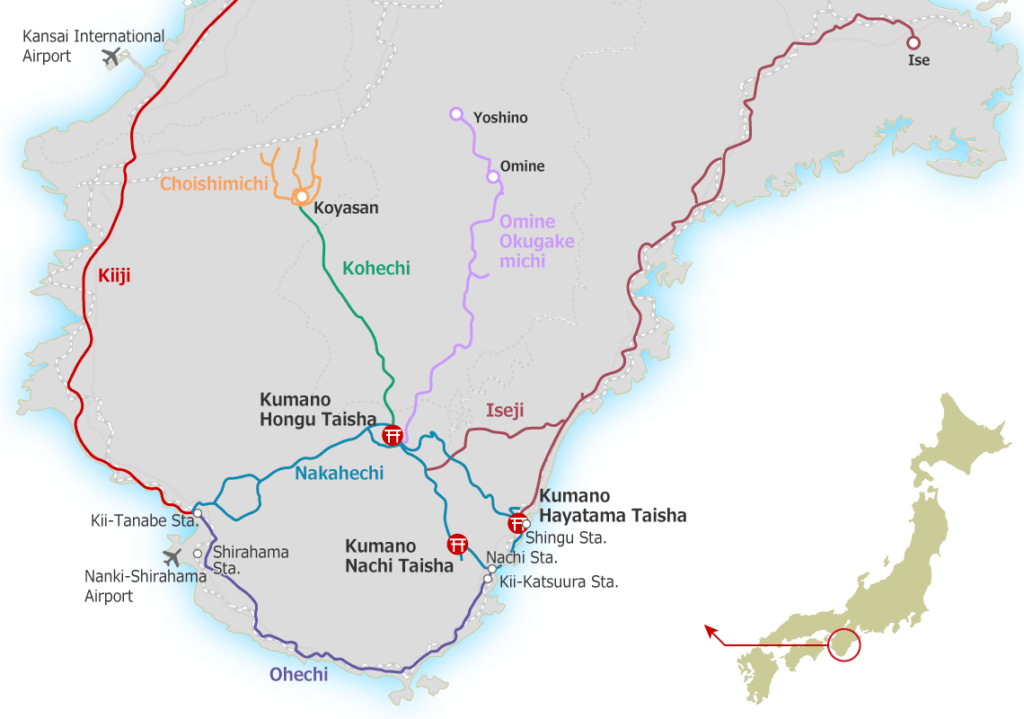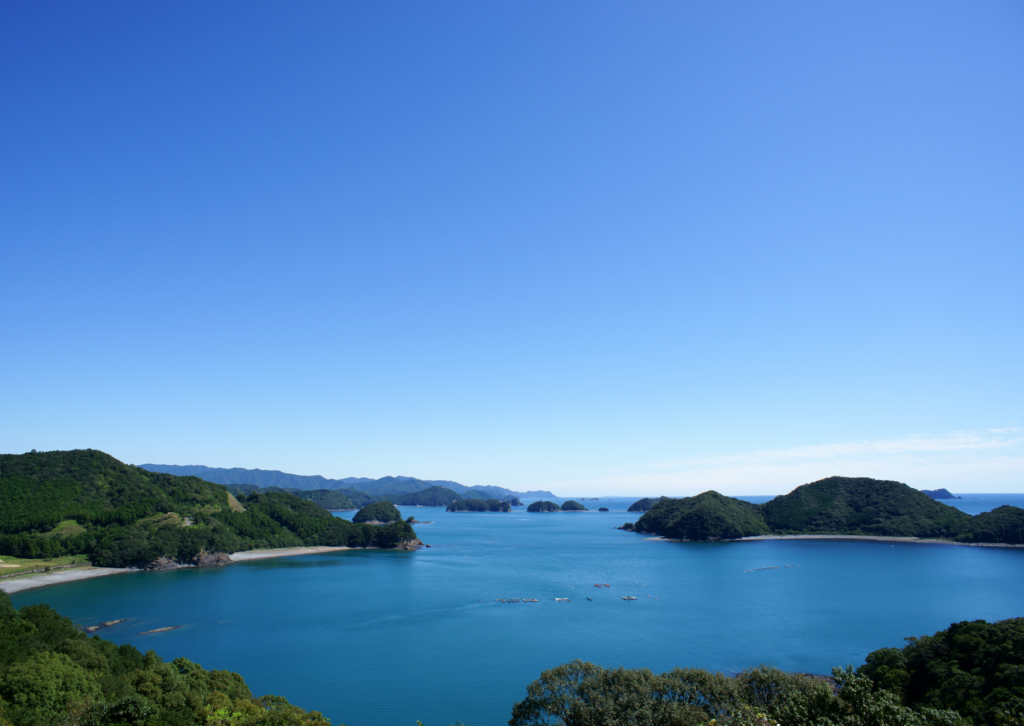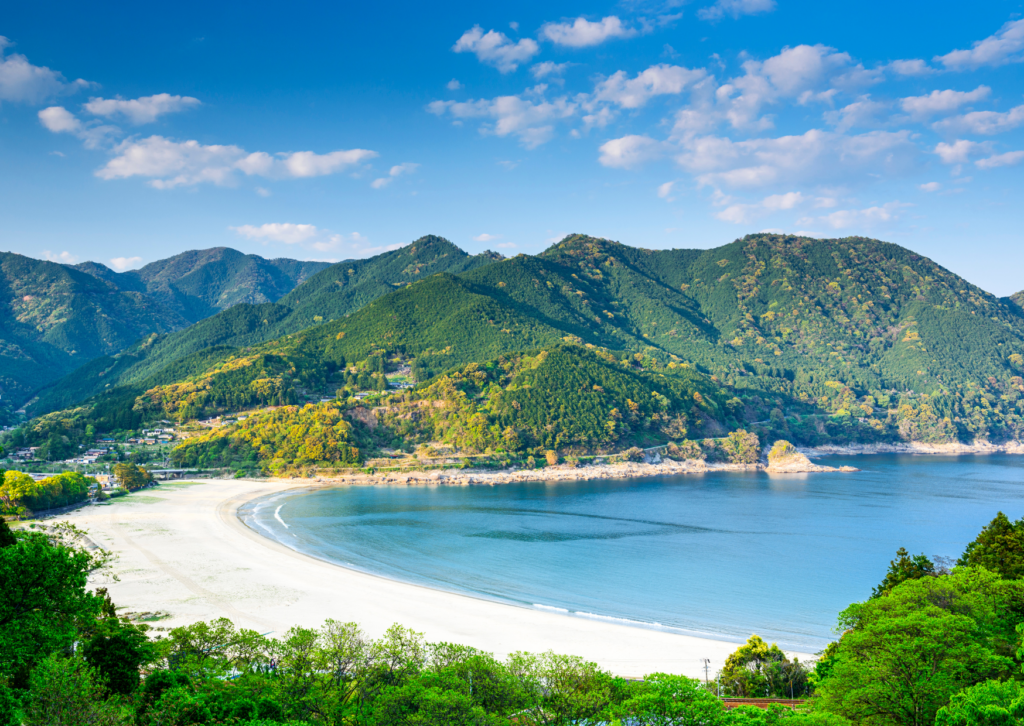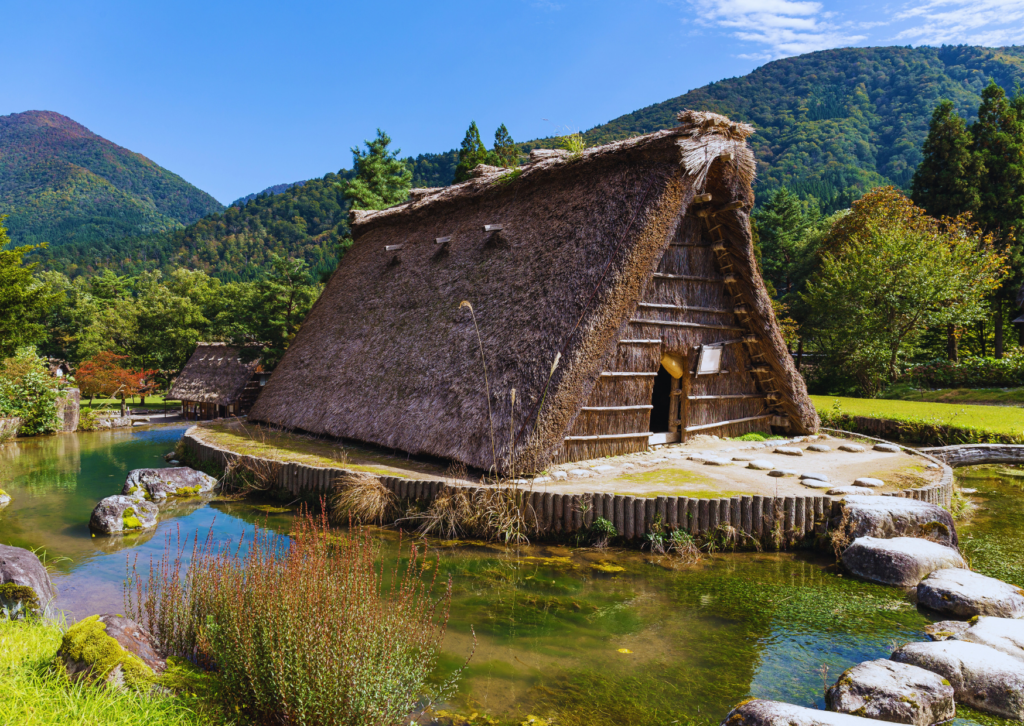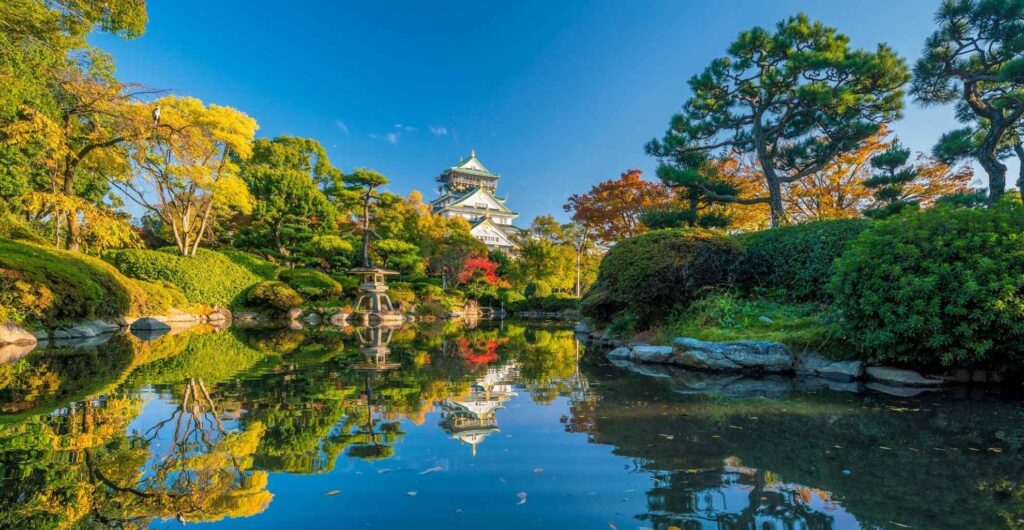
Staying at Kansai Airport? Why You’ll Want to Head Into Osaka
For many of our guests, their adventure with us begins at Kansai International Airport (KIX), the main gateway to Osaka and much of southern Japan. Kansai Airport itself is an impressive feat — built on its own artificial island — but once you’ve landed, you’ll quickly realise that the airport island isn’t the ideal place to linger. Our starting hotel, the Kansai Airport Nikko Hotel, is perfect for a convenient overnight stay after a long flight or before departure. But for anything longer, we strongly recommend heading into the vibrant city of Osaka.
Although the airport is about an hour from Osaka city by train, getting into town is straightforward, and well worth it. If you’re planning a few extra nights before or after your tour, or filling the gap between tours such as our Mount Fuji adventure, Osaka is an ideal base.
What to do close to Kansai Airport?
The airport island is practical but limited. Apart from a few small restaurants and convenience stores, there’s not much to explore. However, just one stop away by train is Rinku Pleasure Town, where you’ll find shopping outlets, a large supermarket, dining options across multiple cuisines, a Ferris wheel, and — for those craving a traditional soak — an onsen (hot spring bath).
While this can make for a short diversion, for a proper taste of the bright lights of Japan, head into Osaka.
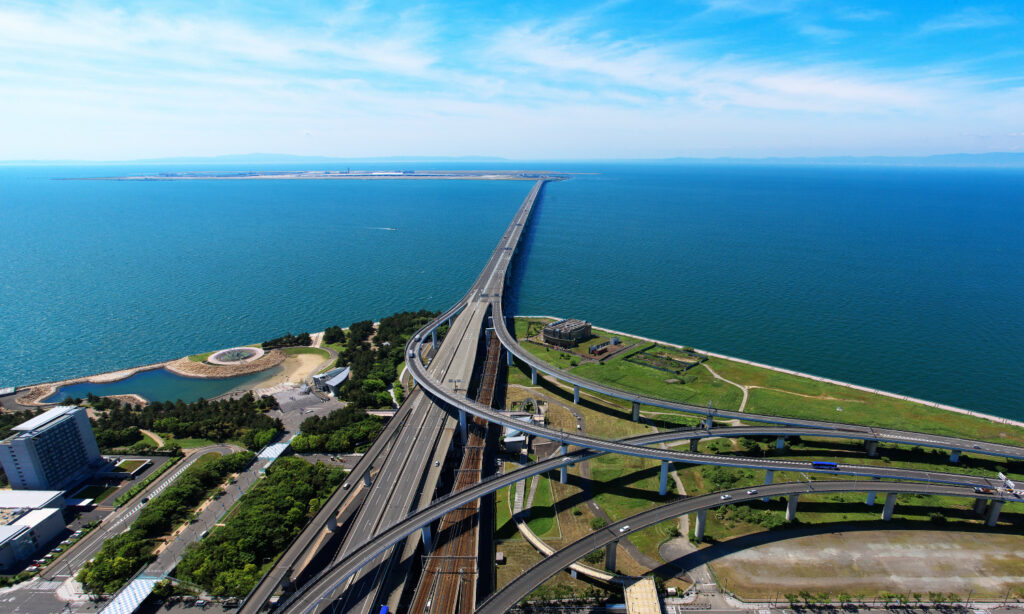
Getting into Osaka
Kansai International Airport is about 50 km from central Osaka — but getting into the city is easy and well worth it. The fastest option is the JR Kansai Airport Rapid Service, which runs approximately every 15–30 minutes and takes about one hour to reach central Osaka (Osaka Station or Namba). This train offers a comfortable and direct ride, ideal for those heading into the heart of the city.
Alternatively, you can take a combination of local trains and subway lines, but this typically requires at least one change and takes longer.Osaka: A City Best Explored on Foot or by Public Transport
Osaka’s excellent metro, train and bus networks make it easy to explore the city without needing a bike. We recommend leaving your bike safely stored — either with us between tours or Kansai airport or Kansai Nikko Hotel — and simply enjoy your time on foot, by train, or by tram.
Top Must-See Sights in Osaka
Shimano Bicycle Museum (Sakai City)
A must for any cyclist. Discover the history of Shimano and the global evolution of cycling technology. The exhibits include historic bicycles, interactive displays, and fascinating insights into Japanese craftsmanship.
Osaka Castle
One of Japan’s most iconic landmarks, Osaka Castle is steeped in samurai history. Originally built in the 16th century by the warlord Toyotomi Hideyoshi, it played a key role in unifying Japan. The castle museum inside tells the dramatic story of feudal Osaka, and the surrounding park is perfect for a peaceful stroll.
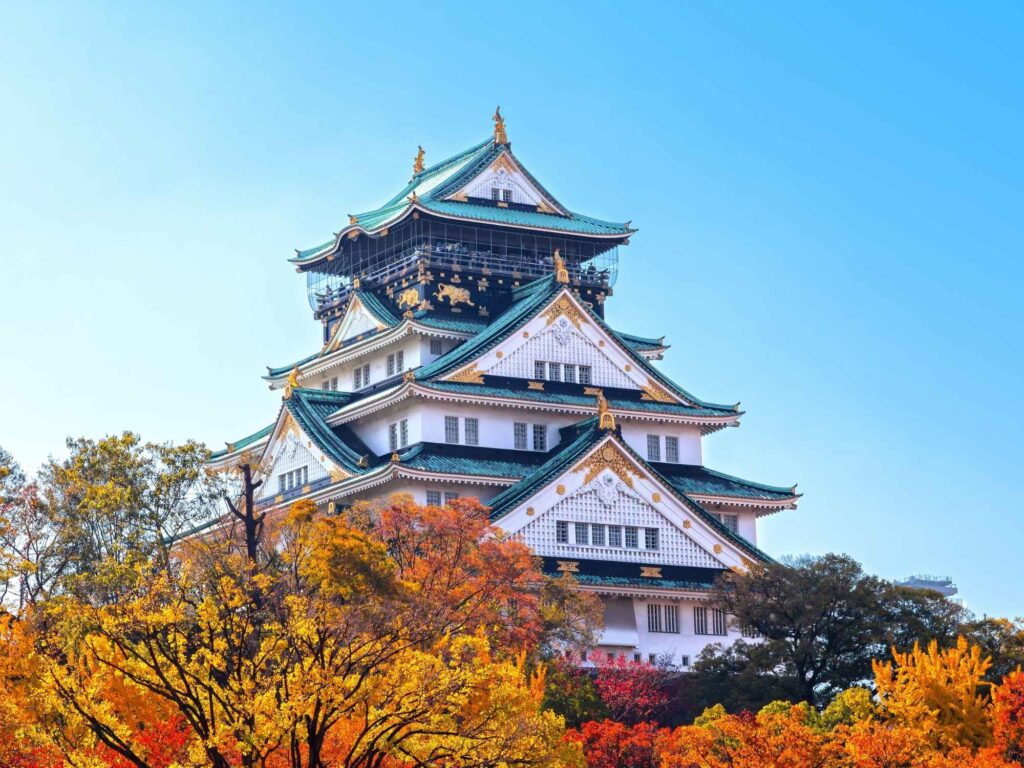
Shitenno-ji Temple
Famous as Japan’s oldest Buddhist temple, founded in 593. A fun fact: to build the massive timber structures, worshippers donated their hair to make ropes strong enough to haul the giant logs — entire tree trunks — over icy roads in winter into the city centre. The temple grounds exude tranquillity despite being close to the busy city.
Osaka Aquarium Kaiyukan
One of the largest aquariums in the world, stretching over three floors, with enormous tanks that include a whale shark — the world’s largest fish. In fact, the construction required almost the entire world’s supply of plexiglass for two years! The aquarium is a hit with all ages and a marvel of modern design.
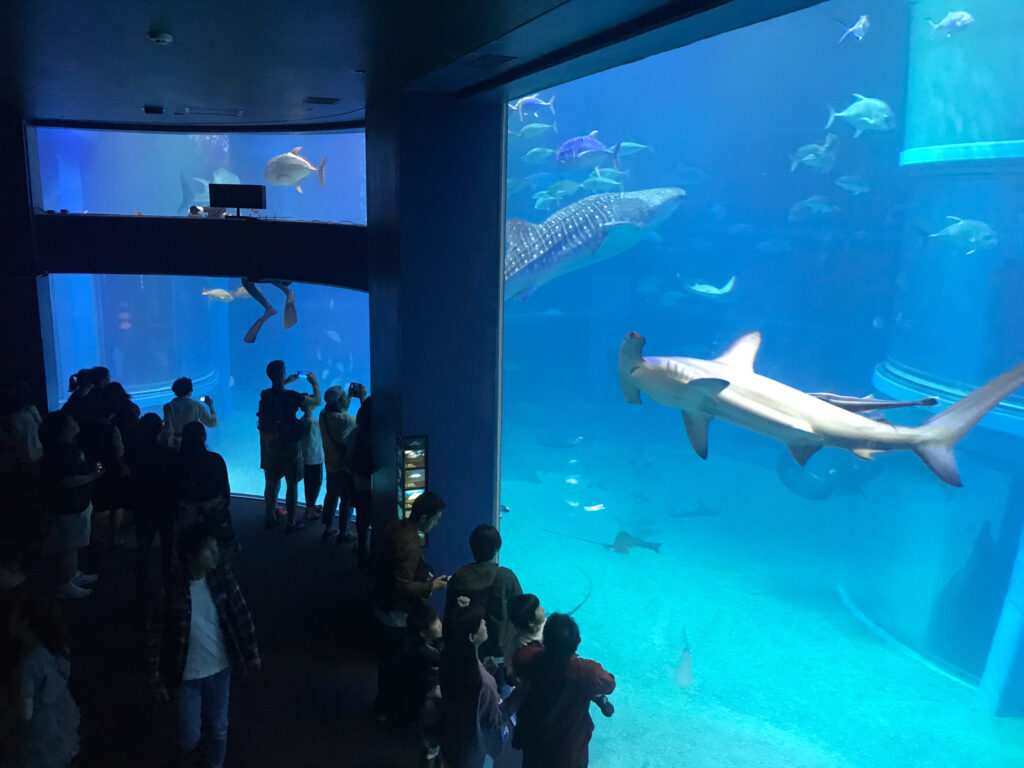
Dotonbori District
Osaka’s neon-lit entertainment hub, famous for the giant animated signs and the iconic Glico Running Man billboard — you’ll recognise it instantly from photos and social media. It’s the perfect place to sample Osaka’s famous street food, from takoyaki (octopus balls) to okonomiyaki (savoury pancakes).
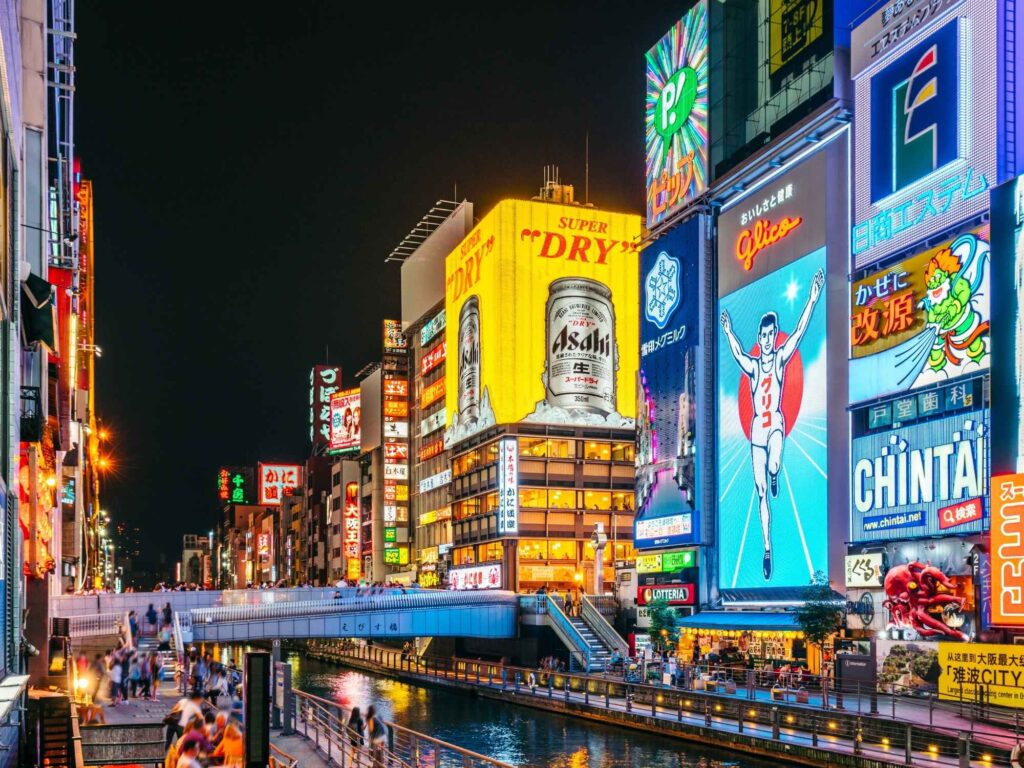
Umeda Sky Building & Floating Garden Observatory
A striking modern landmark. Two towers are connected at the top by a “floating” observatory offering 360-degree views across Osaka. The observatory’s open-air deck provides a spectacular vantage point, especially at sunset or after dark when the city lights glitter below.
Sumiyoshi Taisha Shrine
One of Japan’s oldest Shinto shrines, known for its strikingly straight bridge with a steep arch — one of the most photographed spots in Osaka. The shrine is unique for its ancient style of architecture, which predates the influence of mainland Asia. The peaceful grounds feel worlds away from the bustle of the city.
Quirky & Hidden Gems in Osaka
Cup Noodles Museum (Ikeda)
A fun and interactive museum where you can design your own instant noodle creation and learn about the humble beginnings of this global food phenomenon.
Hozenji Yokocho Alley
A narrow, lantern-lit lane near Dotonbori, lined with tiny eateries and bars. At its heart is Hozenji Temple, where visitors splash water over a moss-covered statue for luck.
America Mura (American Village)
Osaka’s quirky youth district, packed with vintage stores, street art, and cafés with a distinctly alternative vibe. Great for people-watching and browsing unusual finds.
Nakanoshima Art Museum
A modern and beautifully designed space showcasing contemporary and 20th-century art, both Japanese and international. The museum also hosts special exhibitions and has an excellent café and shop.
Samurai & Ninja Museum with Experience
Located near Dotonbori, this small but engaging museum lets you learn about Japan’s feudal warriors. There are displays of samurai armour and weapons, and you can even try on a costume or try your hand at ninja star throwing.
Osaka 3-Day Suggested Itinerary
Day 1: Historic Osaka — Castles, Temples & Gardens
Focus area: Osaka Castle + nearby historical sites
- Osaka Castle & Park
- Explore the castle’s museum (samurai history, feudal battles) and enjoy the castle park’s gardens, moats, and seasonal blooms. A relaxed way to start the day.
- Osaka Museum of History (optional add-on)
- Across from the castle park — great city views and models showing Osaka’s evolution.
- Shitenno-ji Temple
- Visit Japan’s oldest officially administered Buddhist temple. Learn about its fascinating construction — including those human hair ropes used to haul giant beams into place!
- Sumiyoshi Taisha Shrine (if time permits)
- A short tram or train ride south — admire the unique architecture and photogenic arched bridge.
Lunch tip: Try a nearby soba or udon shop around the castle park or temple area.
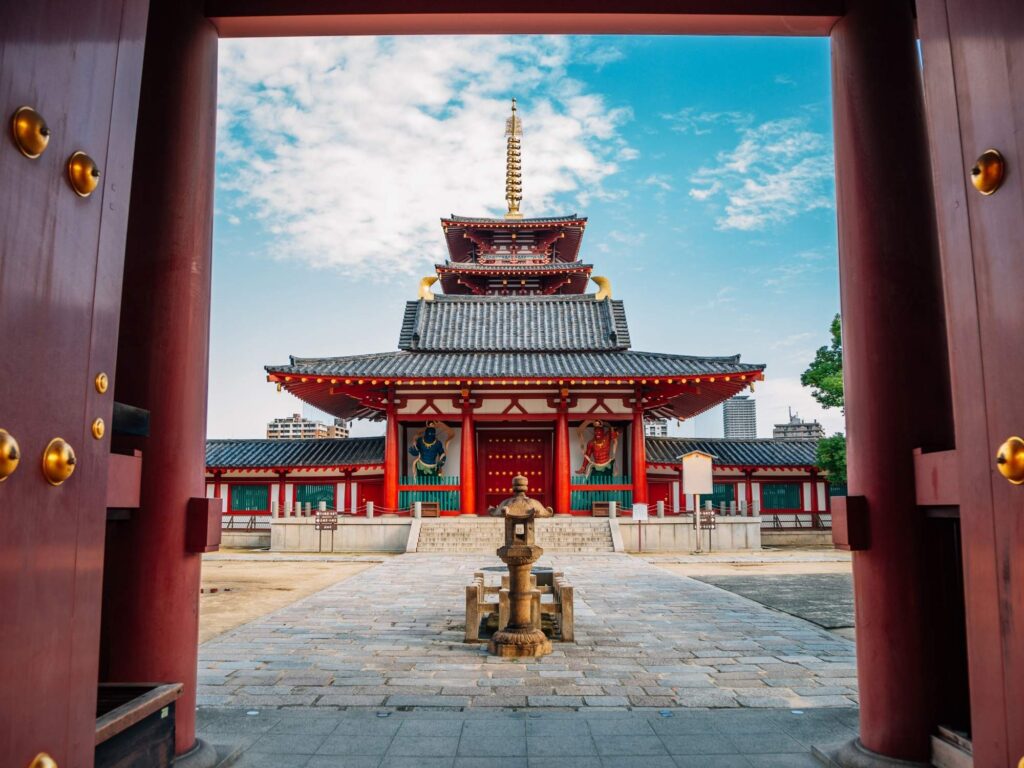
Day 2: Vibrant City Life — Dotonbori, Namba & Hozenji Yokocho
Focus area: Southern downtown (Namba / Dotonbori)
- Hozenji Yokocho Alley & Temple
- A charming hidden lane where you can visit the moss-covered temple and duck into tiny, traditional restaurants.
- Samurai & Ninja Museum with Experience
- Get hands-on with Japanese history: see samurai armour, try ninja star throwing, or dress in period costume.
- America Mura (American Village)
- Stroll through Osaka’s quirky youth culture hub — full of vintage shops, record stores, and cafés.
- Dotonbori District
- Wander the neon-lit streets, see the famous Glico Running Man sign, and soak up the atmosphere.This place comes into its own after dark.
Lunch/dinner tip: Street food along Dotonbori — takoyaki (octopus balls) or okonomiyaki (savoury pancakes).
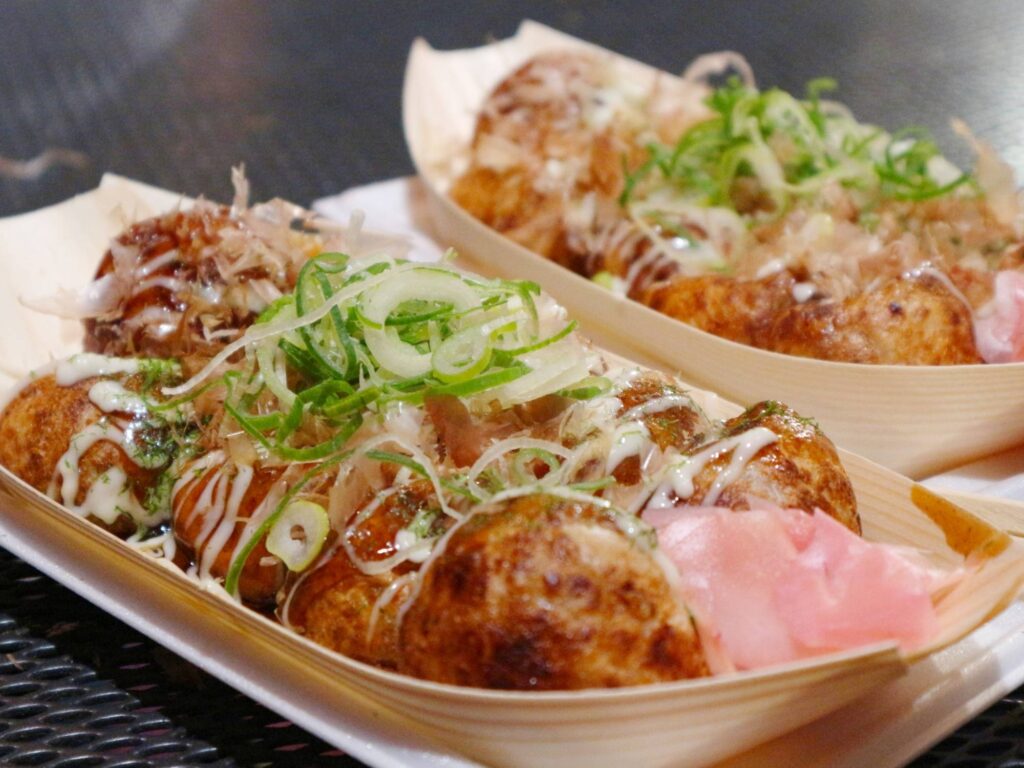
Day 3: Waterfront Wonders & Modern Art
Focus area: Osaka Bay / Nakanoshima
- Osaka Aquarium Kaiyukan (approx 1/2 way between Osaka and Kansai airport, good option for the way back)
- One of the world’s largest aquariums, spanning three floors and home to a whale shark.
- Tempozan Marketplace (next door)
- Shops, restaurants, and a chance for a casual bite with harbour views.
- Nakanoshima Art Museum (afternoon option)
- Head to this modern museum for contemporary and 20th-century art, all in a beautifully designed riverside building.
Lunch tip: Try seafood at Tempozan or a café near Nakanoshima.
- Transport: All areas are easy to reach by metro, JR train, or tram. A prepaid IC card (ICOCA or similar) makes travel simple.
A Few Final Thoughts
While Kansai Airport is the ideal entry and exit point for your tour, the best way to experience this part of Japan is to spend time in Osaka itself. With a little planning, you can explore history, culture, quirky museums, and incredible food — all without needing to worry about your bike. Leave it safely stored and savour the energy of one of Japan’s most characterful cities.
At a glance: Getting from Kansai Airport to Osaka
- Train: JR Kansai Airport Rapid Service
- Frequency: Approx. every 15–30 minutes
- Journey time: Approx. 1 hour
- Destination: Direct to Osaka Station / Namba

